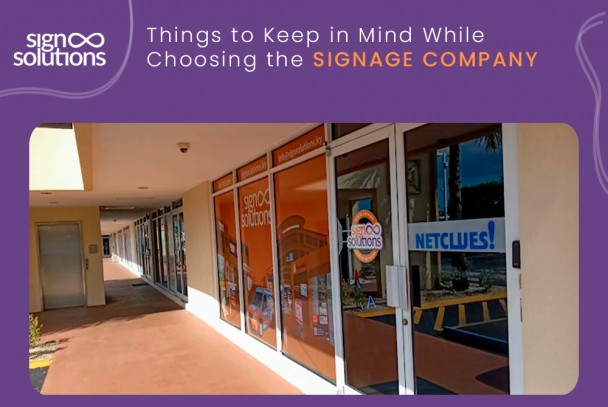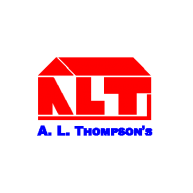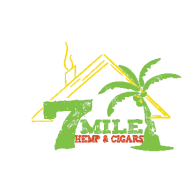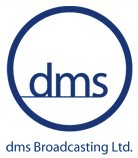Sign Solutions has been our "Go-To" source for all of our Corporate sign, banner and vehicle branding needs for years. Their team is always extremely responsive and their product quality is exceptional for the price. We highly recommend the services of the Sign Solutions!
Wayfinding Signage: Everything You Need to Know
When you visit a mall, multiplex, airport, or metro station, you generally see a few signs with some text and directions indicators. These signs are your wayfinding. As the name suggests, wayfinding is the aid that helps you find ways.
Welcome to the world of Wayfinding Signage!
What is Wayfinding Signage?
Wayfinding Signage helps people navigate through unknown or unfamiliar public places. Wayfinding signage provides crisp, clear, and concise directions to visitors and helps them reach their destination. Wayfinding signage is not limited to a collection of signs but a complete navigation concept (system) designed to help people reach their destination without hassle.
All have acknowledged the importance of wayfinding signs You generally see such wayfinding signages at complex-built premises like educational institutes, hospitals, multi-star hotels, multiplex theatres and auditoriums, and multi-storeyed corporate buildings. Wayfinding has unlimited applications. It all depends on the requirements and necessity of the property. It is necessary to accurately map all the signs to the locations where they point.
This article will explore the types of wayfinding signage and tips to consider while designing your wayfinding signage effectively.
Types of Wayfinding Signage
Directional Signage
Directional signage is a type of signage that provides direction to various locations within a facility. It is used to help visitors or customers navigate a building or complex and can be seen in many public and private places, including airports, schools, hospitals, and shopping malls. Directional signage typically includes arrows, maps, and other universal symbols that communicate the direction and location of a particular destination or public utility unit.
As directional signs are simple and easily understood, visitors can quickly and accurately find their way around the facility. In addition to providing direction, directional signage can provide safety information and highlight important areas or features within a facility. For example, directional signs may indicate the nearest fire/emergency exit or provide information about facilities and services available on that premises.
Directional signage is also used to ensure that visitors maintain a safe and orderly environment. Proper signage allows visitors to follow the established pathways and avoid areas that may be hazardous or off-limits. Directional signs also help reduce the number of people getting lost or confused in a facility, leading to potential safety issues.
Local municipal authorities invest a good deal of money in directional signages. They focus primarily on the wall color or the background lighting where the signage is installed. Ensuring this provides clarity of view and proper readability in bright sunlight or at night, even in the darker area of the premises.
Before installing the best wayfinding signs company in the Cayman Islands, you must consider the type of facility, location, area, ambiance, and visitors using that facility.
Identification Signage
Signs identifying a particular area and indicating that you have reached that location is known as identification signage. Usually, these signs indicate the name or number of a specific room or the entrance to a specific department or office. Generally, these signs are placed adjacent to doorways at entrances.
Identification signage is important for identifying locations, objects, and other items. It creates a visual identity for the area or objects it is attached to. Identification signage typically includes names, logos, or symbols to identify an area, object, or item. You can find it in various places, such as in a business or on a street sign.
Identification signage is used to help people identify a location or item quickly and easily. It can also provide information about the area or direct people to a specific place. Identification signage is used in various ways, such as to identify a building, a store, a place of business, a public space, or a point of interest.
Identification signage is highly visible and draws attention to an area or object. It is meant to guide people around an area like a shopping mall or airport. You can use this signage as a form of advertising. It can help promote your product or service.
Regulatory Signage
Regulatory signage is an important part of the navigation system. These types of wayfinding signs include directional, informational, warning, and prohibition signs. Government authorities, road safety agencies, traffic control, and management wing within the police department generally use regulatory signs. Regulatory signs talk about what is restricted and what is allowed. You may see an indication of a penalty if you don't abide by the regulations.
If you are driving through a hazardous zone, you might see a warning sign alerting the passersby about the potential hazards in that area. Such signs, including symbols, text, and colors, are installed in the public interest.
Regulatory signs are intended to be visible to all citizens. Despite being concise, the regulatory signs are made up of 2 sections. The 1st part is an image indicating the prohibition (stated by law), and the 2nd part is a short text indicating the explanation, penalty, or consequences.
Also, law enforcement personnel may be stationed near the signs to apprehend offenders. These signages are precise and communicate the same message as displayed.
Informational Signage
An informational sign means a sign that informs or gives notice of something that requires attention. Informational signs include warning signs, emergency vehicle entrances, hazardous materials, and pedestrian/school crossings.
The perfect place to see the informational signage is typically at the entrance to a facility. This sign provides detailed information about the building's functions and location. It gives you superficial information that can take you to your desired destination around the premises. It will often include a description of the location, facility, and various departments.
Amongst various types of wayfinding signs, informational signage has something important to offer. It provides a general overview of what you can expect to find while walking through that facility. Even while the information is superficial, it still gives great clarity to the visitor about the facility.
Braille Signage
Braille signage is designed for individuals who are blind or visually impaired, allowing them to access information that would otherwise be inaccessible to them independently. The signage uses braille, a tactile writing system with raised dots representing letters and words. These signs commonly identify accessible features such as elevators, bathrooms, exits, and other areas. Braille signage also provides information such as warnings, instructions, and directional signs.
Braille signage ensures individuals with visual impairments can independently navigate the built environment. Braille signage allows people with visual impairments to understand labels and instructions, allowing them to make decisions and navigate more confidently through the premises.
Braille signage also helps to reduce the risk of accidents and injuries, as people can more easily locate safety features such as fire exits. Braille signage is pivotal in making buildings and public spaces more inclusive and accessible.
Providing braille signs, businesses, government buildings, and public spaces show they are committed to offering an inclusive experience for everyone visiting the facility.
Using Braille signs, amongst other forms of signage, is the best tip for wayfinding signs in a design format. If you look at its creative side, braille signage can act as a visual art form.

Effective Tips for wayfinding signs
Having discussed various wayfinding signages, let us now understand a few effective tips for wayfinding signs.
Effective wayfinding signage systems are crucial for all visitors arriving at a building or facility. Signs are a great friend. They provide visitors with the essential information to locate their destination quickly, independently, and efficiently.
Check these effective wayfinding signage tips to help visitors easily navigate your space:
1. Keep it simple
Make sure the signs are visible and legible. Signs should be visible from a distance to maximize their effectiveness. They should also be legible and easy to read, using a font and color scheme that is easy to identify.
2. Be specific in what you show
Use arrows and symbols to help direct visitors. Arrows, pictograms, and other symbols can help direct visitors to their destination. These symbols should be easy to identify and consistent across all signs.
3. Share additional information
Include information about other points of interest. Wayfinding signs should also include information about nearby points of interest, such as restrooms, cafeterias, and other amenities, helping visitors find their way around the area more quickly.
4. Maintain your consistency
Place signs at an appropriate distance. Signs should be placed at appropriate intervals throughout the building or location to provide adequate guidance, helping visitors stay safely on the right path and reach their desired destination.
5. Add flavors of creativity
When designing wayfinding signs, it is important to use creativity to create signs that are visually appealing and easy to understand. Consider the font, size, and color of the text, as well as the shapes and symbols used. Use contrasting colors to draw attention and make the sign pop. Incorporate symbols and images to help convey the message, such as arrows or maps.
6. Look at the surroundings
Consider the environment to confirm your sign's appearance blends well with it. Remember to keep the design simple and concise to ensure people can quickly understand the sign. Select signs based on the surroundings, brightness available in that area, and clear vision at night. If visitors visit at night, ensure a light source is present to light up the signage.
Wayfinding signages are incredibly important and effective tools to help people navigate any space. It not only makes navigation easier and more efficient, but it also creates a more cohesive and inviting atmosphere.
Suppose you are considering installing Wayfinding Signage For Your Business. In that case, it is crucial to research a professionally managed signage printing and development company that can understand your requirements and offer to set up wayfinding signage that benefits your business.
Design Wayfinding signage in a way that is intuitive to the user, considering their needs and preferences. It should also be aesthetically pleasing and well-crafted, as many people will see it. With adequate research and proper planning, creating a combination of effective wayfinding signage systems will benefit everyone in the long run.
Recent Blog

Stand Out Day or Night: The Power of Backlit Signage for Your Business
When seeing is believing, visibility goes beyond the basic conventions in spreading the awareness of your brand, far and wide. When a customer walks d...
Read More
Easy Ways to Create Stylish Interiors with Custom Signage
Imagine that you visit a store as a customer that houses various products. You enter the store and observe that the store only has products on display...
Read More
Things to Keep in Mind While Choosing the Signage Company
Would you prefer visiting a doctor to get your ailment diagnosed or simply consume a medicine suggested by a friend who doesn’t belong to the medica...
Read More
Designing Wayfinding & Safety Signs That Actually Work (A Complete Guide)
Ever visited a place for the first time and saw wayfinding signs at various locations, corners, and departments to help you reach the next destination...
Read More
Custom Teardrop Banners in Cayman: Make Your Brand Unmissable
The basic question today is, why do we need to rely on signs or banners for our business? The simplest answer is to generate brand visibility for our ...
Read More









